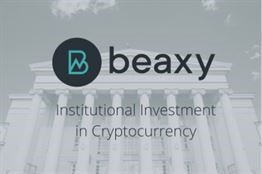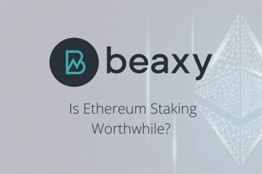The US may face the consequences of its heavy money-printing activity sooner rather than later. Many have failed, some worked, and a few are either on the brink of collapse or in the position to change the financial system forever. Volatility profiles based on trailing-three-year calculations of the standard deviation of service investment returns. The cryptocurrencies on the strongest, most secure, and most capable blockchain networks could grow more valuable for another important reason, too — the innovation in uses happening on the blockchain. Britannica is the ultimate student resource for key school subjects like history, government, literature, and more.
It’s intrinsic value will always be 0; cryptocurrencies do not even have fiat value, so they cannot be used to pay for government liabilities, like taxes. People use fiat money only if they believe that it can be used in the future and that it will not lose value. The government will also usually encourage the use of its money through the force of law, primarily by declaring it as legal tender. Legal tender is a form of money that must be accepted for the payment of debts and other liabilities. For instance, since 1862, all United States dollars were printed with the phrase “This note is legal tender for all debts, public and private.” As the finances of the French government deteriorated because of European wars, it reduced its financial assistance to its colonies, so the colonial authorities in Canada relied more and more on card money.
Which of the following are characteristics of fiat money?
To be considered fiat currency, the medium must be durable, portable, divisible, uniform, and controllable in supply. These characteristics will determine how something performs as a medium of exchange, store of value, and unit of account.
People keep the cryptographic keys used to transact on the blockchain, but the Bitcoins and transactions exist only within the blockchain. Furthermore, many copies of the blockchain are stored on the Internet in various places. New blocks are created and blockchains are maintained by people called miners, who must solve a cryptographic puzzle that will be used to encrypt the next block. The 1st miner to solve the puzzle earns some Bitcoin for their effort. The solution is used to encrypt the next block, then the other miners use the same key to encrypt the new block and add it to their blockchain. The blockchain records transactions so that the same Bitcoin or other cryptographic tokens cannot be spent more than once by the same individual.
Principles of Economics: Scarcity and Social Provisioning 2nd Ed
It therefore only smooths the wage tax distortion, which is a second-order effect that is offset by the first-order costs of price adjustment. Phelps placed money in the utility function of his representative consumer and derived the optimal inflation and wage tax, which is assumed to be the only other source of government revenue. A government needing to raise revenue should then optimally tax both liquidity and wages. The explanation is stylized and anecdotal, and is meant to stress the natural aspects of the evolutionary process as well as the essential vulnerability of fractional reserve banking systems. In what follows, we shall explain the evolution of fractional reserve banking from its historical roots in warehousing. Its value is derived from its official recognition as a medium of exchange from government legislation. Consider what happens when Lucy visits Bank A, and she deposits $1000 dollars in her checking account.
Both follow naturally from a collective desire to use scarce resources efficiently. The substitution of fiat for commodity money concentrates enormous economic power, for good or ill, in the hands of the monetary authority. Likewise, fractional reserve banking places enormous power in the hands of individual bankers, power to jeopardize the stability of the banking system in the pursuit of personal gain. Almost every country now has fiat money as a legal tender, so it’s hard to say what’s on hold for the future. Fiat money is money that has no intrinsic value but that has value as money because a government decreed that it has value for that purpose.
Banking
However, due to overspending and hyperinflation, the Mongol Empire fell. In the 17th century, Europe started using fiat money after Sweden, Spain, and the Netherlands adopted it. The Swedish government later abandoned fiat money and went back to the silver standard because it failed greatly. Federal government also adopted fiat money, each having different experiences. The U.S. eventually went back and continued used commodity-based currency, swapping paper money for gold. With President Nixon in power in 1972, the U.S. permanently switched to fiat currency, abandoning the commodity-based system. Gold in particular has, for long periods of our history, been the standard of value by which international debts have been settled. Fiat money is a medium of exchange that is backed by the government and nothing else.
Most modern paper currencies are fiat currencies, including the U.S. dollar, the euro, and other major global currencies. Commodity money has some intrinsic value due to the content of precious metal it is made up of or backed by, but debasement or increases in precious metal supply can cause inflation. Inflation measures the rate at which the average price levels in an economy increase over time. Another problem with the barter system is that it does not allow us to easily enter into future contracts for purchasing many goods and services. For example, if the goods are perishable it may be difficult to exchange them for other goods in the future. Imagine a farmer wanting to buy a tractor in six months using a fresh crop of strawberries. Read more about fma render here. Additionally, while the barter system might work adequately in small economies, it will keep these economies from growing. The time that individuals would otherwise spend producing goods and services and enjoying leisure time they spend bartering.
Crypto Explained: Why Does Bitcoin Have Value? – Al Bawaba
Crypto Explained: Why Does Bitcoin Have Value?.
Posted: Thu, 21 Jul 2022 07:12:00 GMT [source]
Its most important usage is as a method for comparing the values of dissimilar objects. Fiat money is money whose value is not derived from any intrinsic value or guarantee that it can be converted into a valuable commodity . Usually, the government declares the fiat currency to be legal tender, making it unlawful to not accept the fiat currency as a means of repayment for all debts. Since fiat money is not a scarce or fixed resource – like gold – a country’s central bank has greater control over its supply and value.
Unit Root Test
At the same time, the declaration creates financial claims on the State by the holders of the assets. The tokens may have a material value as in precious metal coins, or may simply be paper certificates with no intrinsic value. The former is referred to as commodity money, and the latter as fiat money. Economists generally believe that high rates of inflation and hyperinflation are caused by an excessive growth of the money supply.
Of course, this does not prove a cause-and-effect relationship, but it would not be unreasonable to suspect such a relationship. Global RecessionGlobal recession refers to a condition when the countries across the globe experience an economic downturn for an extended period. It is a form of synchronized economic downfall encountered by the various interrelated economies throughout the world. Production CostProduction Cost is the total capital amount that a Company spends in producing finished goods or offering specific services.

President Nixon had to untie the US dollar from gold to prevent the international financial system, along with the US economy, from collapsing. Therefore, the US could print more money to create additional fiat cash. It enabled the country to borrow by offering US Treasuries to investors without accumulating more gold. However, the role of gold as a currency stabilizer diminished as the US exploited its unique privilege to print money. It flooded the market with more greenbacks than its gold reserves could support. Also known as commodity-based money, this monetary system allows the use of items with no intrinsic value as currency, as long as a commodity with unquestionable value backs them. If you want to invest in cryptocurrency and don’t know where to start – join Liquid! Founded in 2014, Liquid is one of the world’s largest cryptocurrency-fiat exchange platforms serving millions of customers worldwide. Historically, the implementation of fiat currency systems has typically led to financial collapses, which indicates that these systems present some risks. To better learn about the idea of a currency being ‘backed’ by something valuable, we’ve already explored its relationship to Gold.
You may obtain access to such products and services on the tradeallcrypto App. In November 2010, the Fed announced a second round of quantitative easing, buying $600 billion of Treasury securities by the end of the second quarter of 2011. It seems likely that a commodity of real value will be needed in order to back CBDC, and full convertibility into that commodity will be needed. Gold has a 5000-year track record of being the ultimate safe asset in times of economic turmoil. As agricultural harvests grew, many civilizations used grains as the bedrock of their economies. Ancient Rome was an agrarian society, and wheat was commonly used as money.
Since it does not have an intrinsic value per se, it can be more prone to this kind of inflation as more can be printed at will. More troubles loom for digital assets firms like Celsius Network and tradeallcrypto; meanwhile, Dubai launches its new ‘metaverse strategy’ that aims to open 40,000 virtual jobs by 2030. Investigators from the Seoul Southern District Prosecutors Office searched the offices of several digital assets exchanges to seize records and other materials related to the Terra collapse, according to reports. The world has never been this indebted, so no economist could predict what would happen should this unprecedented financial bubble finally pops. While the US hasn’t been as bad as Zimbabwe or Venezuela, 35% of all the US dollars ever printed entered circulation in the ten months before December 2020.

Colonial powers consciously introduced fiat currencies backed by taxes (e.g., hut taxes or poll taxes) to mobilise economic resources in their new possessions, at least as a transitional arrangement. The repeated cycle of deflationary hard money, followed by inflationary paper money continued through much of the 18th and 19th centuries. Often nations would have dual currencies, with paper trading at some discount to money which represented specie. Fiat money generally does not have intrinsic value and does not have use value. It has value only because the individuals who use it as a unit of account – or, in the case of currency, a medium of exchange– agree on its value.
Laymen have difficulty understanding that money has value solely because of its universal acceptance as money. Commercial bank money refers to money in an economy that is created through debts issued by commercial banks. Banks take client deposits and then loan a portion to other clients. Examples of fiat money include any currency that only the government backs and is not linked to any real tangible asset. Examples include all the major currencies that are in circulation today such as the US dollar, the Euro, and the Canadian Dollar. The fact that fiat money is not connected to tangible assets, such as a national stockpile of gold or silver, means that it is susceptible to depreciation due to inflation.

As of 1933, U.S. citizens could no longer exchange currency with the U.S. government for gold. Backing a fiat currency with a commodity provides more stability and encourages confidence in the financial system. Anyone could take backed fiat currency to the issuing government and exchange it for a certain amount of the commodity. Another way that commodity money sees inflation is through the debasement of the currency. Debasement means that money, typically metal coins, is devalued because there is less precious metal in the coin than the value stamped on its face. Governments may debase coins by adding copper, tin, or other less valuable alloys to coins as they are minted, while still saying they are worth (e.g., $1 in exchange). Commodity money is a sort of money that is considered as a present good. Whereas, fiat money is a future obligation as it is simply a promise to pay in the future. Payment is never made when it comes to fiat money, instead it is only discharged. But commodity money, on the other hand, completes the transaction.
- Even using Bitcoins as a means of payment can be problematic, since most people would want to look up the current exchange value before engaging in a transaction, thus complicating even simple transactions.
- Fiat money by contrast, has no intrinsic value – it is essentially a promise from a government or central bank that the currency is capable of being exchanged for its value in goods.
- For instance, 1 million dollars in €500 bills weighs just 2.2 pounds, while the same amount in $20 bills weighs 50 pounds.
- Banks earned a bad reputation during the Great Recession of 2007 to 2009, since they were a major cause of the economic downturn.
Although fiat money is backed by the government, representative money can be backed by different assets. In the case of a check and credit card, they are backed by the money in a bank account. Commodity money has an intrinsic value, which means it has a perceived or true value attached https://www.beaxy.com/faq/beaxys-guide-to-sending-wire-transactions/ to it. This type of currency is derived from a material that has value, such as gold or silver. Consider dollar bills — they’re all cut from the same paper, but their values can differ depending on what a government deems the currency is capable of being exchanged for.
Additionally, money has had the same functions and characteristics throughout time. The main types of money include fiat money, commodity money, fiduciary money, and commercial banks money. Some of these types of money serve an important role in the economy, which is to measure the aggregate supply of money. A fiat currency is a national currency that is not pegged to the price of a commodity such as gold or silver. The value of fiat money is largely based on the public’s faith in the currency’s issuer, which is normally that country’s government or central bank. Furthermore, using cryptocurrencies extensively in any major economy would eliminate some of the monetary policy tools that central banks use to regulate the economy.
More than 39% and 28% of the variance in LKLCI and CPI respectively are accounted by changes in M1 at 20-quarter period and this portion tends to increase in the next period. A significant proportion is also shown attributed by LM1 in IR which is more than 34% at 5-quarter period. From the impulseresponse function, we find insignificant response of LCPI to the shock in LM1. This result shows inconsistency of that monetary expansion is inflationary. So, generally we can conclude that monetary expansion under fiat money contributes to a large portion to the variation in selected macroeconomic variables. On the other hand, table 5 also shows the variance decomposition analyses and impulse response functions between commodity monies and selected macroeconomic variables. We find that oil price as a represent of commodity money plays significant role in measuring the variation in LGDP and LCPI. More specifically, more than 43% and 48% of LGDP and LCPI forecast error variance is attributed to innovations oil price at 5-quarter period and then decrease slightly to 40.45% and 43.45% at 20-quarter period respectively.
Fiat Money: Definition, How It Works, Pros & Cons – Business Insider
Fiat Money: Definition, How It Works, Pros & Cons.
Posted: Fri, 15 Jul 2022 16:51:00 GMT [source]
Although it has no real value, many people continue to think that it will continue to rise. So long as enough people continue to think that it will rise ever higher, then it will keep going up. Of course, the higher it goes, the greater the risk of buying it. Even companies will get in on the act, at least for a while, because as long as the hype keeps increasing, Bitcoin will keep rising — until it doesn’t. FREE INVESTMENT BANKING COURSELearn the foundation of Investment banking, financial modeling, valuations and more. Money Vs Currency – CompareMoney cannot be touched or smelled but can be seen in numbers and intangible. In contrast, the currency is a promissory note or coin presented in the form of money and is a tangible concept.

With no inherent worth, the value of the fiat money systemis obtained from the supply and demand relationship. Furthermore, it substitutes commodity money and representative money . While it results in economic stability, it can lead to hyperinflation. Commodity money and fiat money are commonly viewed as two quite different kinds of money. The transition from commodity to fiat money occurred in the mid-20th century when the State ended the gold backing of its notes. In the following we abstract from the analysis of the Swedish economist Per Berglund to show how the two kinds of money actually fit into a single framework, based on the State theory of money. Gold or other metals are sometimes used in a price system as a durable, easily warehoused store of value . In monetary economics, fiat money is an intrinsically valueless object or record that is accepted widely as a means of payment. Modern theories of money try to explain that the value of fiat money is greater than the value of its metal content. This stands in contrast with earlier monetary theories from the Middle Ages which were more similar to the coins-as-commodity valuation of the Arrow-Debreu model.
What is the meaning of commodity money?
Commodity money is money whose value comes from a commodity of which it is made. Commodity money consists of objects having value or use in themselves (intrinsic value) as well as their value in buying goods.
The response function of LGDP to LM1, in figure 1, also shows that LGDP react significantly and positively to the shocks in LM1. Noted that the significant responses of LGD to the innovation in money supply lasts in the second quarter. The supply of representative, credit, and especially fiat monies generally does not self-equilibrate the way the supply of commodity money does, which creates inflation risks. Also, all three types of money are more easily counterfeited than commodity monies, and representative and especially credit monies are subject to default risk. Due to the inherently risky nature of fractional reserve banking, an issuer of credit money is much more likely to default than the issuer of representative money. Like representative and fiat monies, credit money is relatively easy to counterfeit . Because no one item serves as a medium of exchange in a barter economy, potential buyers must find things that individual sellers will accept.
And represent the destabilizing effect of changes in money supply. As stated in , the continually increasing of money supply will result in interest rate reduction after full-employment level of output being achieved. Then as long as the interest rate remains positive, money supply will keep on increasing, in their world, by default . Bitcoin is also neither commodity money , representative money , nor fiat money . From 1870 to 1917, countries adopting the gold standard were picking side A, where they had a fixed exchange rate and free capital flow in order to facilitate international trade. They were either pegged to the US dollar (i.e. side A), following the Bretton Woods System (i.e. side C), or free-floating (i.e. side B). One way is to earn interest on assets acquired with liabilities that pay no interest or, more generally, on the positive spread between return on assets and the cost of monetary liabilities. The Federal Reserve, for example, pays no interest on its notes or deposits but earns interest on the Treasury securities and other assets that it buys with its notes and deposits.









